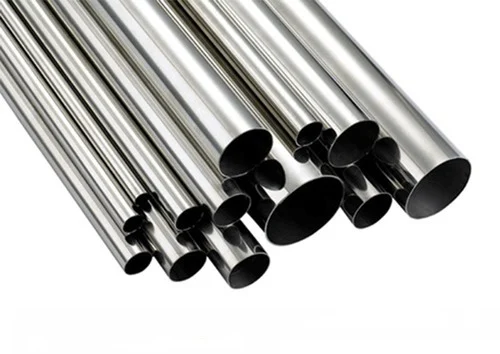How to Choose Between Stainless Steel 347 and 347H Pipes

When it comes to high-temperature applications, stainless steel pipes are often a reliable choice. Among the different grades available, stainless steel 347 pipes and stainless steel 347H pipes are two popular options. While both types are very similar in composition and features, there are a few key differences that help in deciding which one is better for your specific needs. This blog will help you understand what stainless steel 347 and 347H pipes are, how they are different, and which one to choose for your project.
What Are Stainless Steel 347 Pipes?
Stainless steel 347 pipes are made from an austenitic stainless steel alloy. This means they are strong, non-magnetic, and highly resistant to corrosion. What sets 347 apart from other types of stainless steel is the addition of a small amount of niobium. This element helps improve the resistance of the material to intergranular corrosion, which can occur when the steel is exposed to high temperatures for a long time.
Stainless steel 347 pipes are mostly used in industries such as:
- Chemical processing
- Petrochemical
- Heat exchangers
- High-temperature pipelines
- Food and pharmaceutical processing
These pipes are strong and can handle stress and pressure in high-temperature environments. They are also easy to weld and form, making them a good choice for different piping systems.
What Are Stainless Steel 347H Pipes?
Stainless steel 347H pipes are almost the same as 347 pipes, with one key difference: they contain more carbon. The “H” in 347H stands for “high carbon.” This increased carbon content (around 0.04% to 0.10%) gives the material improved high-temperature strength and creep resistance.
This means that stainless steel 347H pipes are more suitable for applications where the temperature is extremely high, and the material needs to maintain its strength for a long period of time.
Common uses for 347H pipes include:
- Power generation plants
- Oil refineries
- Furnace parts
- Boilers
- High-pressure steam lines
Because of their high carbon content, 347H pipes are slightly less corrosion-resistant than 347 pipes but are much stronger at high temperatures.
Key Differences Between Stainless Steel 347 and 347H Pipes
| Feature | Stainless Steel 347 Pipes | Stainless Steel 347H Pipes |
|---|---|---|
| Carbon Content | Low (Max 0.08%) | Higher (0.04–0.10%) |
| Strength at High Temperature | Good | Better |
| Resistance to Intergranular Corrosion | Excellent | Good |
| Weldability | Excellent | Moderate (may require post-weld treatment) |
| Applications | General high-temp uses | Extreme high-temp and pressure uses |
| Price | Slightly lower | Slightly higher |
Understanding these differences is important when selecting the right pipe for your needs. While both options perform well in high-temperature settings, the choice depends on the specific requirements of your system.
When to Choose Stainless Steel 347 Pipes
Choose stainless steel 347 pipes if your application involves high temperatures but does not require extremely high strength. These pipes are a great choice if:
- You are working with temperatures between 800–1500°F.
- Your system needs excellent corrosion resistance.
- You want easier welding and fabrication.
- You are working with standard industrial equipment and pipelines.
They are ideal for general industries that need reliable high-temperature performance without the added cost of higher-carbon material.
When to Choose Stainless Steel 347H Pipes
Stainless steel 347H pipes are best when your application involves not only high temperatures but also high pressure and long operating hours. Choose 347H pipes if:
- You expect extreme temperatures above 1000°F for long periods.
- Your project demands higher mechanical strength.
- You are dealing with boiler parts, furnace tubes, or refinery equipment.
- You need better resistance to stress rupture and creep.
Although they may be slightly harder to weld and cost a bit more, 347H pipes offer better long-term performance in extreme conditions.
Important Things to Consider
When choosing between stainless steel 347 and 347H pipes, keep the following factors in mind:
1. Temperature Range
Think about how hot your system will get. If the temperature remains below 1000°F, 347 pipes are usually enough. If it goes above that and stays there for long periods, 347H is the better choice.
2. Weldability
If your project requires a lot of welding, then stainless steel 347 pipes may be a better option. The low carbon content in 347 reduces the risk of weld decay, making it easier to fabricate and maintain.
3. Mechanical Strength
For projects that will face a lot of pressure and heat, especially over time, stainless steel 347H pipes offer better strength and durability.
4. Corrosion Resistance
Both materials offer great resistance to corrosion. However, due to the lower carbon content, 347 pipes offer slightly better corrosion resistance, especially against intergranular corrosion.
5. Budget
Stainless steel 347 pipes are usually a little more affordable than 347H pipes. If the higher strength of 347H is not necessary, you can save costs by choosing 347.
Summary
Choosing between stainless steel 347 pipes and stainless steel 347h pipes comes down to how much stress, temperature, and pressure your application involves. Both are excellent materials with strong resistance to heat and corrosion, but:
- Use stainless steel 347 pipes for general high-temperature applications, better weldability, and corrosion resistance.
- Use stainless steel 347h pipes when you need higher strength at extremely high temperatures for a long time.
Knowing your exact needs will help you make the right decision and ensure the safety, reliability, and durability of your system.
Final Thoughts
Both stainless steel 347 pipes and stainless steel 347h pipes are trusted materials in industries that require strength and resistance to heat and corrosion. By comparing your operating temperature, pressure conditions, and fabrication needs, you can choose the right type for your project.


